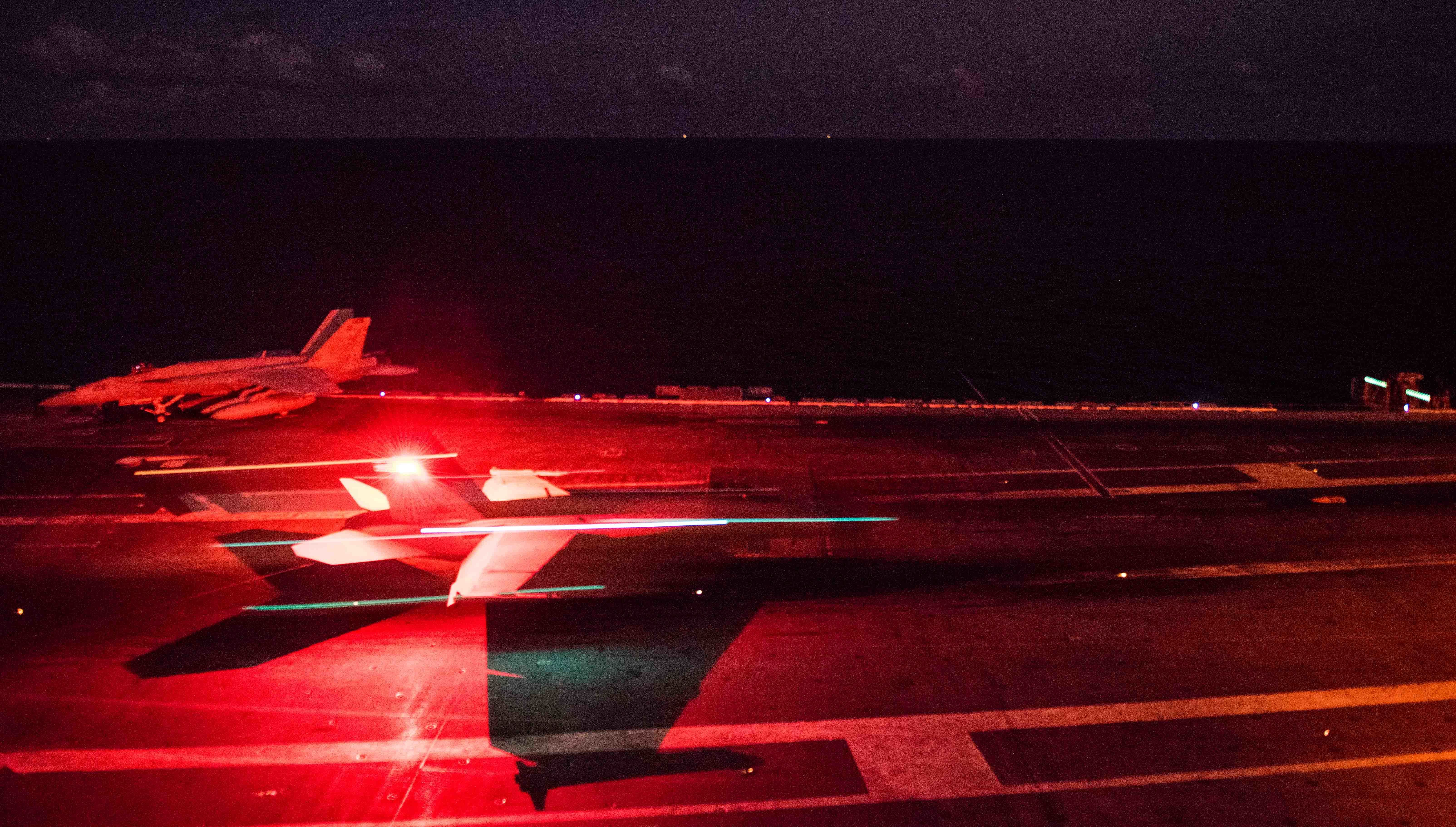
The Navy is keeping classified the amount of Fiscal Year 2022 money it wants to develop the next-generation fighter aircraft set to replace the fleet of F/A-18E/F Super Hornets, according to service budget documents.
The Navy’s FY 2022 budget justification documents withhold the amount of dollars the service is putting toward the Next Generation Air Dominance (NGAD) program. This is the second consecutive budget cycle in which the Navy has classified information about its investment into the service’s sixth-generation fighter.
“The details of program element are classified and are submitted to Congress in the classified budget justification books,” the service’s FY 2022 budget justification documents read.
Rear Adm. John Gumbleton, the Navy’s deputy assistant secretary for budget, in a briefing last week confirmed to reporters that there is funding in the budget for the program, but that NGAD is classified.
“Yes there is and the NGAD is a classified program,” Gumbleton said. “So no comment here.”
The Navy in FY 2021 similarly included a line item for the next-generation fighter in its research and development portfolio, but did not show any dollar amounts for the Future Years Defense Program (FYDP) five-year outlook.
The last time the Navy showed a dollar amount for NGAD in its budget books was in FY 2020, when the service sought approximately $20.7 million in research and development funding for the effort. That year’s budget books projected a dollar figure in the FYDP at the time, with the amount increasing each fiscal year. At the time, the Navy projected it would seek $55.05 million in FY 2021, $111.26 in FY 2022, $255.59 in FY 2023, and $371.9 million in FY 2024 for NGAD.
While the Navy has said little about the NGAD program, a service official recently shed some light on a path the service may take. Rear. Adm. Gregory Harris, who leads the chief of naval operation’s air warfare directorate (OPNAV N98), earlier this year said the Navy would likely pursue a manned fighter that would work with other unmanned assets for a family of systems approach to the program.
“As we look at it right now, the Next-Gen Air Dominance is a family of systems, which has as its centerpiece the F/A-XX – which may or may not be manned – platform. It’s the fixed-wing portion of the Next-Gen Air Dominance family of systems,” Harris said during a Navy League breakfast event at the end of March.
“But we truly see NGAD as more than just a single aircraft. We believe that as manned-unmanned teaming comes online, we will integrate those aspects of manned and unmanned teaming into that,” he added. “Whether that – we euphemistically refer to it as our little buddy – is an adjunct air-to-air platform, an adjunct [electronic warfare] platform, discussion of could it be an adjunct advanced early warning platform. We’ll have to replace the E-2D [Advanced Hawkeye] at some point in the future, so as we look to what replaces that.”
Harris at the time said the Navy divided its work on the NGAD program into two increments – increment one will evaluate a successor for the Super Hornet fleet and increment two will determine a replacement for the EA-18G Growler. The Navy has used F/A-XX to refer to the F/A-18 E/F replacement, while NGAD refers to the whole family of systems.
The Navy quietly stood up a program office for NGAD last year and assigned a manager to the effort, USNI News previously reported.
Capt. John Dougherty, who previously led Naval Air Systems Command’s precision strike weapons program office (PMA-201), took the reins of the NGAD program office earlier this year, a NAVAIR spokesperson confirmed to USNI News. Capt. Al Mousseau, who the service tapped last year to lead the NGAD office, is retiring.
NAVAIR acknowledged a request for an update on the NGAD program, but did not provide an immediate response.
The Navy finished its analysis of alternatives (AOA) for NGAD in July 2019 and as of August 2020, it had already started convening industry days for the program, USNI News reported last year.
The Navy has been seeking a replacement for the Super Hornet fleet for nearly a decade. The service put out its first request for information for the F/A-XX program in 2012, Flight Global reported at the time.





